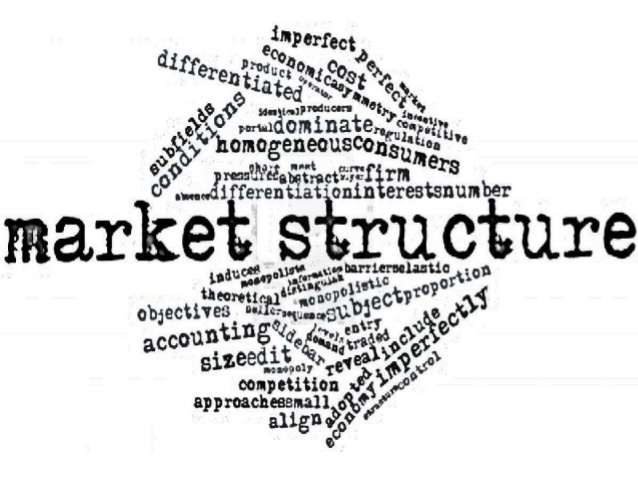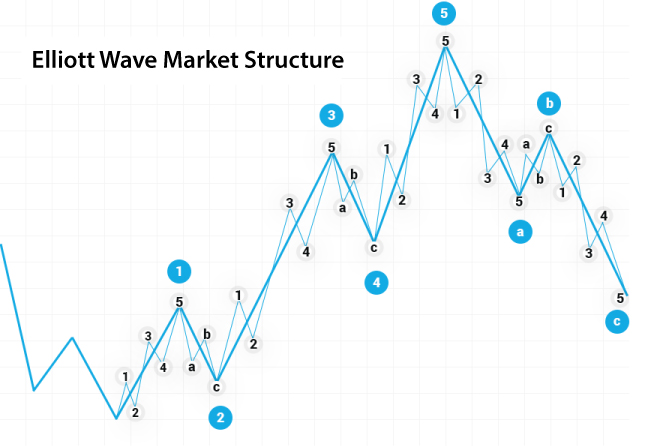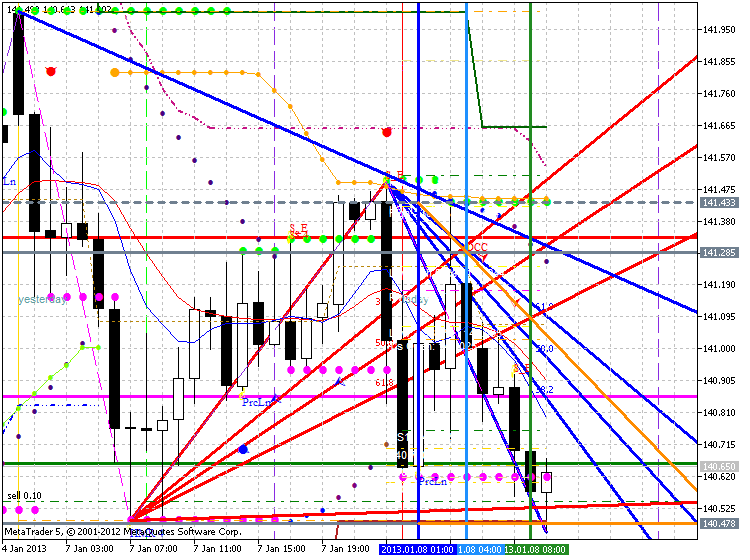In Elliott Wave analysis, guess what is the first thing most traders look out for whenever they open a new chart?
If your answer is "Market Structure", you are spot on.
When it comes to any form of chart analysis, the most important element is ultimately Market Structure, period.
The ability to recognize, understand and interpret market structure is the pinnacle of all forms of price action trading methodologies.
This is especially true for Elliott Wave Analysis.
What Exactly Is Market Structure?
From a technical analysis perspective, market structure is a combination of many aspects of charting.
It is represented as an up trend on your charts when prices make higher highs & higher lows.
Or as a down trend when prices make lower highs and lower lows.
It is represented as support and resistance on your charts.
Demarcated as consolidated areas termed as "Zones" and not just as single horizontal lines and levels.
It is also represented as chart patterns.
Commonly recognizable patterns would include "Flags", "Pennants" and "Head & Shoulders" patterns etc.
All of these combined, makes up the market structure that every technical analyst is familiar with.
Common Misinterpretations Of Market Structure
Unfortunately, many Elliott Wave technicians fail to correctly interpret market structure when they are initially starting out.
I noticed that majority of newbies make 2 common mistakes when it comes to interpreting market structure in their Elliott Wave Analysis.
Mistake #1
Firstly, many newbies typically begin their education using the Elliott Wave Analysis with the above image literally etched onto the canvas of their minds.
Whenever they open any chart, the very first thing they look out for is this 1-2-3-4-5-a-b-c chart formation.
The "Frightening" truth is that irregardless of what the charts are showing, all they can seemingly recognize is only this motive pattern.
They have the tendency to "Force" the wave count.
Constantly, trying to "Custom" fit every market move into this standard configuration.
Unfortunately, the financial markets are not always trending all the time.
In fact, around 65% to 75% of the time, markets are in a range bound situation, especially in the Forex markets.
I reckon one way to overcome the problem of "Force-Counting" is to dig deeper into the lower time frames.
This is based on the fact that markets are "Fractal" in nature.
Doing your due diligence to investigate what is actually happening in the lower time frames often helps.
It aids traders to avoid miscounting and labeling of the wave counts in the larger degree.
The devil is always in the details.
Cognitive Bias in trading is very "Real" and can be potentially dangerous and detrimental to your account equity.
Mistake #2
Secondly, I noticed that a large portion of traders often start learning the Elliott Wave Analysis at a much more advanced stage of their trading journey.
And judging from their past trading experiences, most have previously relied heavily on one or more forms of technical indicators.
Popular technical indicators such as the Moving Average, Relative Strength Index (RSI), Moving Average Convergence Divergence (MACD), Stochastic etc. are often key pillars of their charting arsenal.
Without the shadow of a doubt, many of these traders consider that trading using technical indicators is much easier than trading using price action.
This is especially true in terms of chart visualization and interpretation.
The cross-over of the faster moving average above / below the slower moving average or the crossing of the MACD above / below the zero-line simply offers opportunities to take Long / Shorts trades respectively.
Lagging Nature Of Technical Indicators
The fundamental flaw of using technical indicators are that it is "Lagging" in nature.
Technical indicators are a "Derivative Of Price".
This means that price for that particular time frame has to complete in order for the technical indicator's formula to compute.
And then provide traders with a visual representation in the form of a bar or line graph.
Sadly, many traders often allow the use of technical indicators to take precedence over analyzing pure price action using market structure.
And it is exactly this "Over-Reliance" on technical indicators that often cloud their judgment when interpreting the underlying price action.
Market Structure on the other hand is Price Action's natural and real-time representation on the charts.
Perhaps the above chart may be a tat exaggerated with all its messy trend lines and indicators.
But the point is that having a whole plethora of indicators will often confuse and distract your focus and attention.
More indicators will certainly not give you better results.
It only adds clutter to your charts, camouflaging the most important element, price.
Remember, too many cooks can just spoil the soup.
Conclusion
Some traders including myself do use a combination of both in our chart analysis.
But the sequence in which we focus this form of analysis is crucial.
Many novice traders often make the fundamental mistake of looking at technical indicators first over price movements.
This will often influence and affect their judgement.
Instead, they should be focusing on what is happening to the price structures that is unfolding on the charts.
Personally, I reckon that the correct way to an effective Elliott Wave Analysis is to first prioritize market structure analysis.
Technical indicators should always be a supporting tool in any form of price action methodology.
Give precedence to what price is telling you before looking at any technical indicators and NOT the other way round.
Shorten your learning curve by downloading our complimentary Elliott Wave Cheat Sheets.
For more articles on the Elliott Wave Principle, check out our other posts in our Elliott Wave Blog.




